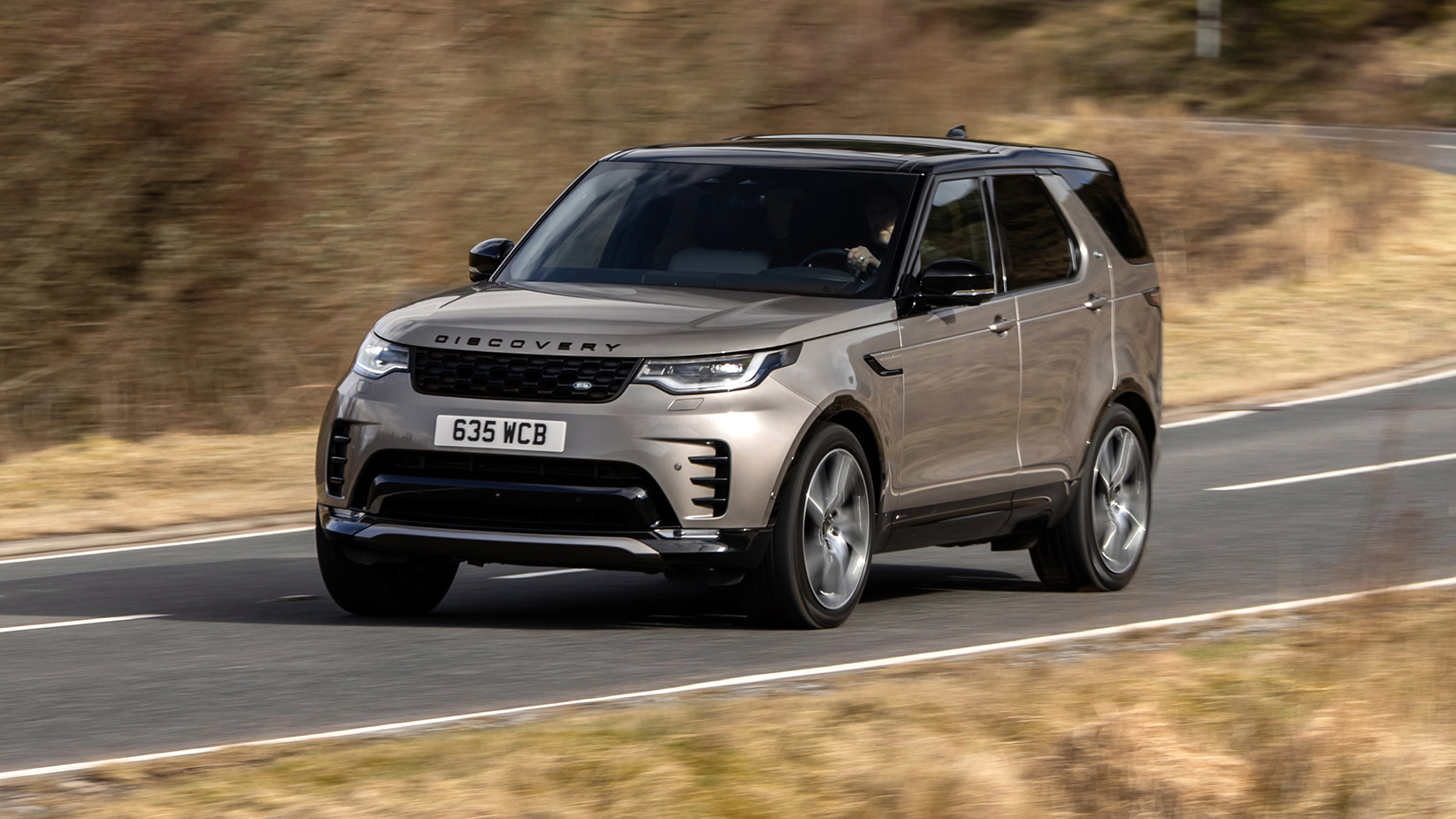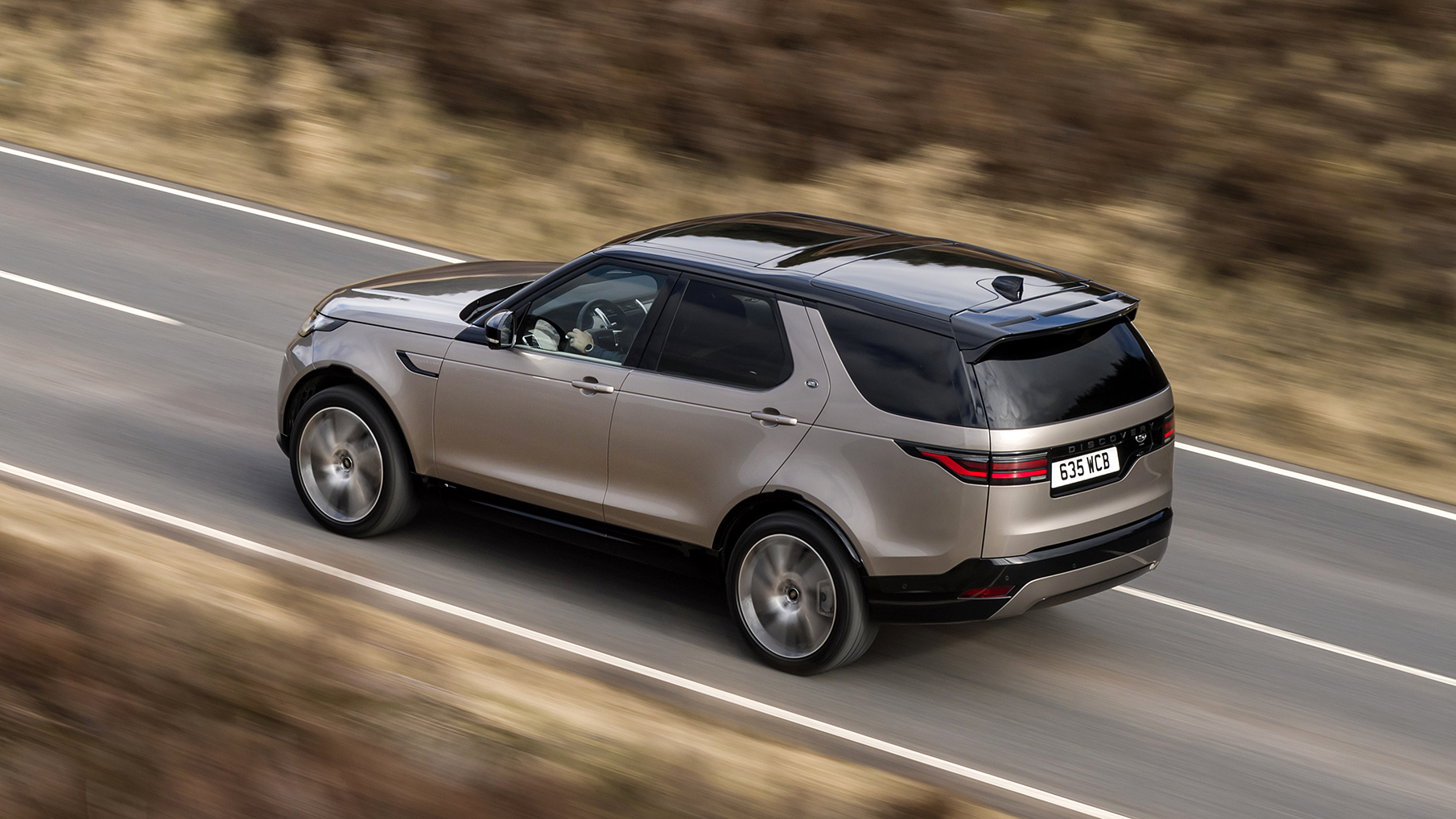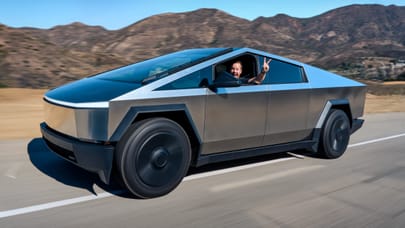
Driving
What is it like to drive?
The new P360 petrol offers up 360bhp and 369lb ft, which punts the big Disco from 0-62mph in 6.5 seconds and on to 130mph. Our test car was a mere 600 miles old, and felt a little tight for it, with a slight vibration through the steering wheel as the revs climbed to beyond 5,000rpm. Solution: don’t rev it that high. There’s sufficient torque to bowl along at a decent lick without really uncorking the engine’s limits, though if you do there’s a pleasant six-pot engine note in the middle distance. Settle everything down and it’s a quiet cruiser with strong prod-and-go performance.
Unfashionable as it may seem though, the Disco is a car built for diesel power, and what a diesel this D300 is. Here we find a big car with the motor it was destined to marry: a 300bhp, 479lb ft bruiser that’s very nearly as quick as the petrol but that much more effortless doing so. Even makes a nice noise, and it’s 10mpg better off just about everywhere. Reckon on 25-30mpg in the D300. The maths in the petrol makes for alarming reading, unless you’re used to EV range anxiety…
The eight-speed gearbox is rarely caught out and, as per all the best luxury cars, does its job best by being completely unnoticeable. If you insist on taking over manually, the new metal paddles are beautifully tactile but watch out for a thumb-slicing attempt as the wheel jiggles about off-road.
The thing about driving a Disco is that, well, it’s not a car you really drive. You guide it, two fingers on the steering wheel, elbow nestled on the captain’s armrest. There’s not a single iota of sportiness about it, and that’s fine, because Land Rover has the Rangie Sport for that. That said, you can now have an R-Dynamic trimline to square up to all the M Sport BMW X7s and AMG-line Mercs in the finishing school car park. Land Rover’s done an admirable job rationalising the ride on 22-inch rims, but we’d still go for the slightly more pliant, (not to mention the less thrusting image) of an SE spec.
There’s no doubt the Discovery is happiest blasting along a motorway, where wind noise is apparent but everything else gorgeously stable and refined, or on a sweeping A-road. In town or in the sticks, its sheer girth makes life fraught.
It’s a pity really: a Land Rover is a car built in the British countryside, for the British countryside, to be bought by people who own most of the British countryside. And yet, in its natural home, it doesn’t feel at ease. Don’t presume these things never go off-road – you’re up a verge twice a minute to squeeze past the hapless van or horse-rider who’s dared to use the same lane as you.
We’d also prefer a firmer response to the brake pedal. It’s a given that a 2.4-tonne luxo-tank takes a lot of stopping, but it’d be nice to feel there was a bit more braking left ‘in reserve’ when you’re merely slowing for a roundabout.
As imperious as the big Landie is on the road, it’s even more impressive off it. The sense you can just point this car – even the townie R-Dynamic - at any slope, any surface or any natural disaster and conquer it while having a heated back massage enjoying concert-quality hi-fi audio is just delectable.
The ground-monitoring Terrain Response system is a joy to behold, or rather, the readouts that show it opening and loosening diffs juggling traction or defying gravity on a tricky hill descent are stunning to watch.
It’s a spectacular melding of old-school brute force, traction and green-lane, mug-plugging skill with fiendishly clever computing power. You simply will never need a better off-road car than this, which is just as well because with the possible exception of the hardier Defender, there is no off-road car that’s as talented – or as effortless – as the Discovery. In fact, it’s so brilliant, you have to wonder if it’s wasted in being confined to Her Majesty’s highways and not so many of her byways.
Variants We Have Tested
Trending this week
- Car Review
- Long Term Review









